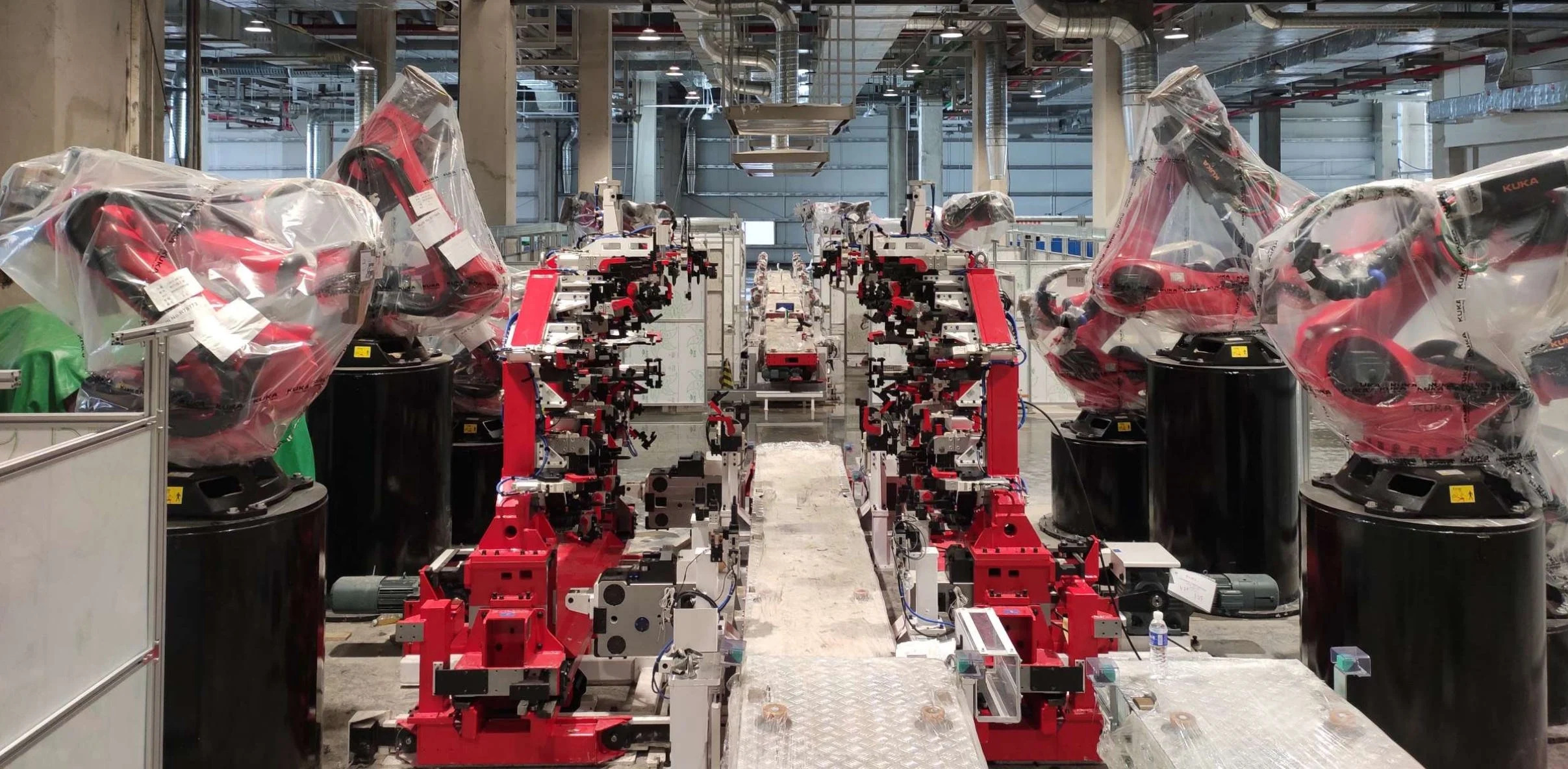Tesla Model Y in the
Tesla Gigafactory in Grünheide, Germany, October 2021.
Patrick Pleul/picture alliance via Getty Images
- Workers at GM, Ford, and Stellantis went on strike last week.
- The work stoppage will exacerbate a structural advantage enjoyed by EV leader Tesla.
- EVs have fewer parts than gas-powered vehicles. This means fewer jobs in the industry.
When auto workers went on strike at GM, Ford, and Stellantis last week I immediately thought of this video.
It’s from a 2019 Bloomberg story about Germany’s car industry. But the technological changes shown here, and inexorable math at the heart of them, apply globally:
The traditional internal combustion engine has more than 1,000 parts. New electric engines have about 50. That means fewer jobs because EVs are much simpler and therefore easier to assemble.
With all the ink spilled about the rise of electric vehicles since 2019, I’ve been surprised by how few words have focused on what will be a radical and painful industry transformation.
The auto industry has been a powerful job generator for decades, forging huge cities with healthy and relatively stable paychecks for millions of workers and their families. As EVs take over, this will no longer be the case. Forget about AI. This is the job destruction that’s guaranteed to happen soon.
‘Fewer employees’
The Congressional Research Service, which provides analysis to US legislators, warned about this a few years ago. Gas-powered vehicles have as many as 2,000 components in their powertrains, while Tesla has said its drivetrain has 17 moving parts, including just 2 in the motor, it noted.
“Electric vehicle powertrains, if built domestically and not imported, would generate production employment, but fewer employees may be needed than at present because vehicle battery packs have relatively few components and are less complicated to assemble than internal combustion engine powertrains,” the Congressional Research Service wrote. “Electric vehicles utilize a large number of electronic sensors, but these devices require little labor to produce and assemble.”
Labor is one of the main expenses that companies try to flex when competing against each other. If one business has an approach that gives it a clear cost advantage, everyone else will quickly try to adopt a similar strategy.
Tesla had a decade headstart, in terms of EV manufacturing, but other automakers are now racing to catch up. There may be some environmental benefits to EVs, but a bigger driver of this is that they are just way more efficient to manufacture.
About 40% less labor
Auto executives don’t like talking about this much, because it basically means jobs will be lost and that’s hard to bring up. But some of the industry’s top leaders have discussed it occasionally.
In late 2022, Ford CEO Jim Farley told the Financial Times that manufacturing EVs requires about 40% less labor than making the same number of internal combustion vehicles. VW’s CEO in 2019 estimated that building EVs involves about 30% less effort than making gas-powered cars.
Carl Court/Getty Images
The UAW strike could cost America’s 3 main traditional automakers as much as $5 billion within just 10 days. This will exacerbate the structural disadvantage they already face.
Elon Musk has already won
Whatever the outcome of the strike, Elon Musk has already won, Tim Higgins, one of the top auto industry reporters, wrote this weekend in The Wall Street Journal.
Higgins wrote a book about Tesla, called Power Play, that expertly explains how the company developed a more efficient vehicle manufacturing process.
As a pure EV maker, Tesla doesn’t have to deal with internal combustion engines, gas lines, exhaust pipes and other complex designs that cost more to assemble.
GM, Ford, and Stellantis have begun making more EVs, but those operations are still relatively small and that lack of scale means they mostly lose money selling those new vehicles. The rest of their operations still focus on gas-powered cars and trucks.
Tesla’s workers are not unionized, so the company will keep churning out Model 3s, Model Ss, Model Ys, and soon the new Cybertruck, while some factories of its main US rivals sit idle.

Tesla
The Giga Press
And Tesla is not resting on its laurels. Instead, the company is trying to extend its manufacturing advantage. It recently introduced Gigacasting technology to its auto plants.
The Tesla Giga Press is a giant machine that uses aluminum die casting to make much larger vehicle parts. Again, the goal here is to reduce the number of car parts to make the manufacturing process simpler and more efficient. And yes, that probably means even fewer jobs.
Toyota, GM, Hyundai and China’s Geely are beginning to use this technology, too, or are planning to do so, according to Reuters.
